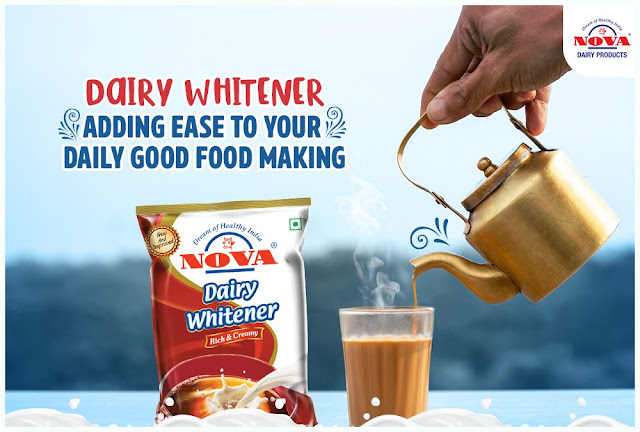Milk is a widely consumed health beverage in India and around the globe. We can’t imagine our lives without milk. Produced from cow milk, Dairy Whitener is an ideal alternative to liquid milk. The popularity of suitable dairy whiteners in the current world is increasing. It offers the same whitening effect and taste as milk does and disperses quickly without causing oil separation in the beverage. Because of their easy handling & suitable shelf-life, dairy whiteners are becoming a favorite choice among individuals. They can stand up to the beverage’s high temperature and low pH with prominent usages at railways, airways, and offices. Dairy whiteners tend to neutralize coffee acids by giving a smoother, milder consistency with a sweet taste. Produced by evaporation of moisture content in the milk with adding 20 percent sugar during its processing, it can whiten tea and coffee or any other food it is added to. Its purpose is to substitute the milk powder and reduce the amount of milk content in tea, oatmeal, coffee, and other bakery goods.
There is an increase in demand for dairy whiteners in coffee and tea and in making dishes like soups, sauces, ice cream, and cereal dishes as it is easy to carry, dissolves quickly without leaving lumps, and is suitable for health too. They have an excellent whitening ability and resistance. Most dairy whiteners are appropriate for lactose intolerant; however, they contain sodium caseinate, which is milk protein casein, but its content is significantly less in the whiteners and is easily digestible than milk.
Constituents of Dairy Whitener
- Corn syrup solids add texture & bulk and are produced by partial hydrolysis of corn starch with enzymes and acid.
- Palm oil stays solid at room temperature, which makes it a popular ingredient in processed foods.
- Dipotassium phosphate is a water-soluble dipotassium salt and acts as a stabilizer to prevent coagulation.
- Sodium Caseinate is a form of protein extracted from milk by purification of casein and functions as a soluble emulsifier, stabilizer.
- Lecithin functions as an emulsifier also act as an antioxidant and flavor protector.
- Sodium Stearoyl Lactylate helps to achieve the same consistency and flavor as milk contains.
It’s Uses:
Excellent properties and water solubility make dairy whitener perfect for various food applications such as ice cream making, baking, milk tea, and coffee.
Ice Cream
It has the following benefits to ice cream:
- Increases the volume of ice cream
- Keeps ice cream stable, in shape and avoid thawing and without forming giant crystal
- Whitens and makes ice cream creamier
Bakery
It has the following benefits in baking
- Functions as an emulsifier
- Improves the structure & physical properties of the baked products
- It gives a good appearance to the baking good
Difference between Dairy Whitener and Milk Powder
- Dairy Whitener is a dried milk product with added sugars so that it can be readily used for tea or coffee making without adding more sugar. Whereas milk powder is the dried form of milk, you are just removing the water part through the drying process.
- Without forming the lumps, the dairy whitener dissolves smoothly in the liquid & on the other hand, the milk powder develops the lumps when dissolved in liquid.
To help you have milk substitute instantly or want to make some delicious ice cream or coffee and tea without any fuss, we have a popular and authentic option for you that dissolves quickly and gives the best taste to your tongue. Nova dairy whiteners are the best emulsifiers for your meals and beverages. Dairy whitener price vary according to their different size packaging from 500 grams to 10 kg jar as suggested by the brand. It possesses an excellent whitening ability with high dispensability, feathering, and emulsion stability. However, it is essential to store the dairy whitener in an air-tight container after opening the pack.
Source URL: https://bit.ly/3ic1OEd





